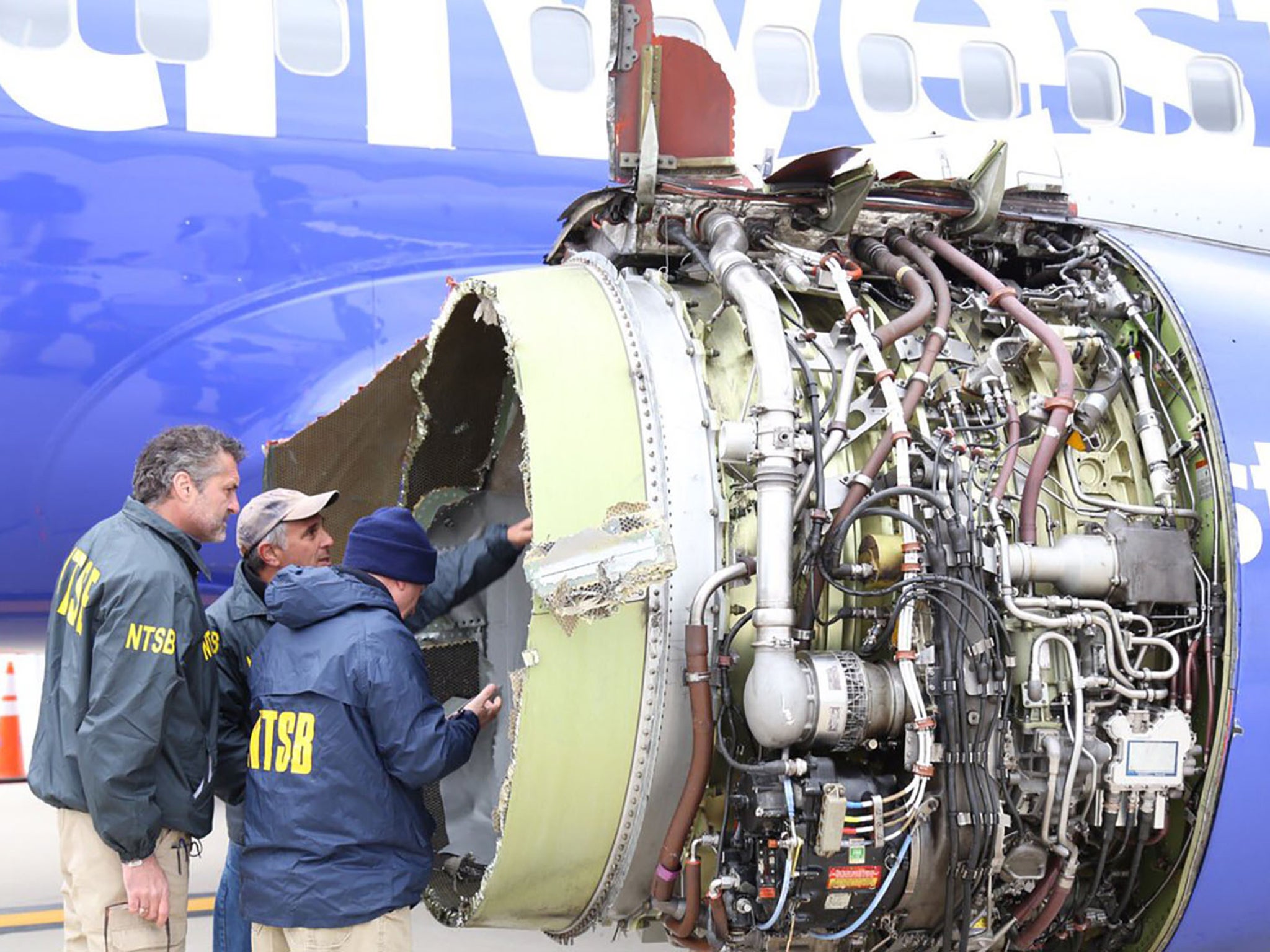Southwest Airlines: Investigators consider ‘undetectable crack’ as possible cause of deadly emergency landing
Investigators are leaving the Philadelphia airport, but say it is too soon to say what led to the deadly explosion

Your support helps us to tell the story
From reproductive rights to climate change to Big Tech, The Independent is on the ground when the story is developing. Whether it's investigating the financials of Elon Musk's pro-Trump PAC or producing our latest documentary, 'The A Word', which shines a light on the American women fighting for reproductive rights, we know how important it is to parse out the facts from the messaging.
At such a critical moment in US history, we need reporters on the ground. Your donation allows us to keep sending journalists to speak to both sides of the story.
The Independent is trusted by Americans across the entire political spectrum. And unlike many other quality news outlets, we choose not to lock Americans out of our reporting and analysis with paywalls. We believe quality journalism should be available to everyone, paid for by those who can afford it.
Your support makes all the difference.Investigators with the National Transportation Safety Board say that it is too early to say with any certainty what caused a Southwest Airlines jet engine to fatally explode mid-flight, but they are looking into whether it is possible an undetectable crack could have led to the disastrous series of events.
The team searching for answers has already amassed a pile of evidence, including the plane’s cockpit voice recorder, the flight data recorder, damaged engine parts, and video footage captured by fearful passengers as the plane descended. But, it is still too soon to determine what went wrong, NTSB Chairman Robert Zumwalt said Wednesday.
“I know people would want answers right away. We would do a very methodical investigation,” Mr Sumwalt told reporters. “Right now, we just want to document everything that we can.”
The NTSB is looking into whether a crack on the inside of a fan blade could have caused the engine to fail. The crack, according to Mr Sumwalt, was “certanily not detectable from looking at it from the outside.”
Investigators have determined that one of the cracks on the blade was consistent with metal fatigue, and that the blade itself had broken twice in total — nearly halfway through the piece, and again the blade was attached to the hub.
Southwest Airlines has said that workers had performed a visual inspection of the engine that failed, and that an X-ray and ultrasonic inspection was scheduled for December. The X-ray and ultrasonic inspections help inspectors to see the cracks that are harder for the human eye to detect.
The Federal Aviation Administration has said that it will issue a new directive to airlines that would require the more thorough inspections after a certain number of cycles, and that airlines will be asked to quickly perform the inspections on the type of engine that failed.
The Southwest Airlines plane was forced to land in Philadelphia after the engine exploded at 32,000 feet, resulting in a loss of cabin pressure after pieces of shrapnel hit the cabin. One woman was pulled partway out of the plane before being pulled back in, but later died. Several others were injured, but not seriously.
The pilot was able to put the plane down after 22 minutes of chaos in which passengers managed to take videos and pictures. Some of those show people with the overhead oxygen masks over their mouths. Other photos, from after landing, show the damaged engine.
Join our commenting forum
Join thought-provoking conversations, follow other Independent readers and see their replies
Comments